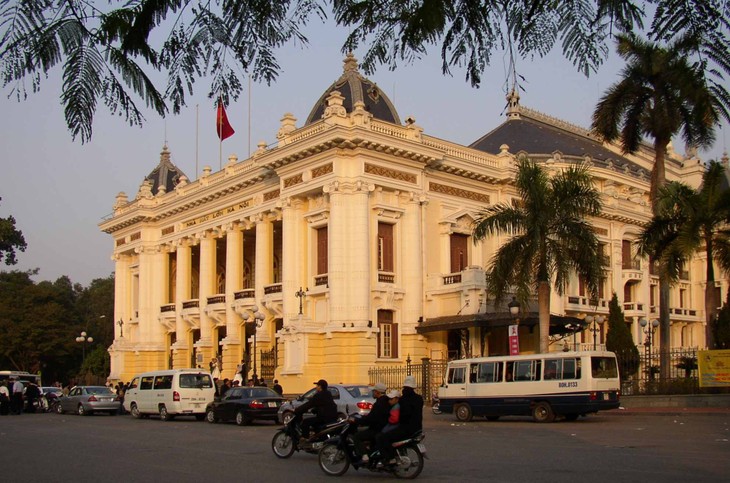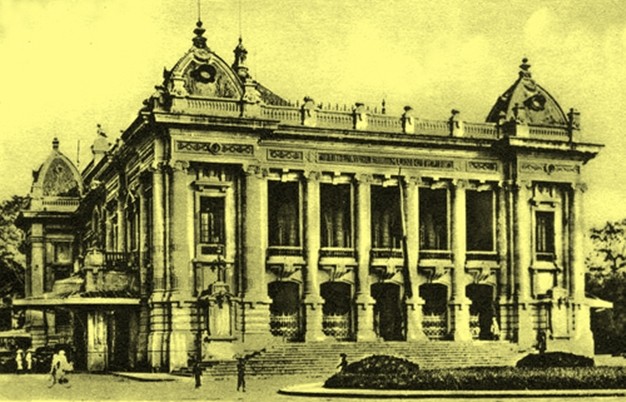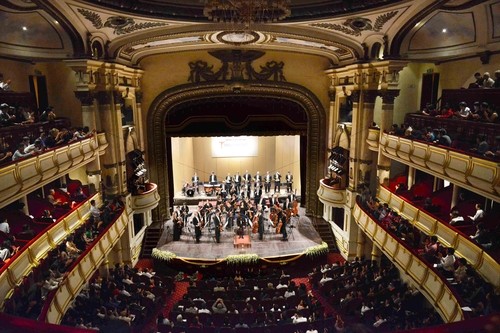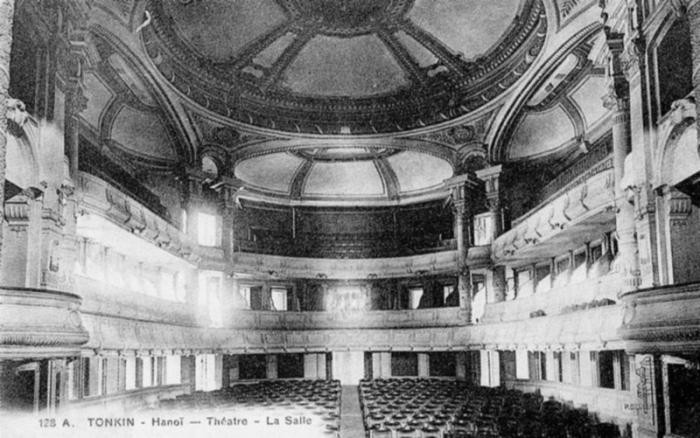(VOVworld) - Located in the heart of the capital city of Hanoi, Hanoi Opera House is only a prominent example of French architecture but also a venue that frequently hosts major events. The Opera House is a tourist attraction and the pride of Hanoi.
 |
The Opera House is located at No 1 Trang Tien Street, close to the Restored Sword Lake. It was once described by Japanese architects as the most beautiful architectural site in Southeast Asia. It resembles a sumptuous palace of colonnades and arches. Strongly inspired by the Garnier Opera House in Paris, this building was built between 1901 and 1911 with the help of two French engineers Travary and Savelon. The Opera House’s theater, stairs, lobby and entrance door embody the European architectural style of the early 20th century. The building has an area of 2,600 m2, a length of 87m, a width of 30m and a height of 34m. The large front veranda overlooks the August Revolution square. In the 870-seat concert hall, the seats are covered with leather or velvet. The second and third levels have private boxes for VIP guests and families. At the rear of theater, there are administrative rooms, dressing rooms, rehearsal hall, a library and meeting rooms. Near the main hall on the first floor is the prestigious hall of mirrors for meetings and cocktails.
 |
The Hanoi Opera House was renovated in 1997 to host the Francophone summit held in Vietnam for the first time. Architect Hoang Dao Kinh aided the restoration work: "Of all the architectural works in Vietnam, none has as beautiful and sophisticated zinc decoration zinc as the Hanoi Opera House. Needless to say, the restoration was very difficult. We called for tenders from French companies, but their prices were very high at that time costing several millions of dollars. So we decided to use Vietnamese artisans. They were extremely competent. They created molds of 7-8 levels to restore the zinc decorations at a cost 4 or 5 times lower than that proposed by the French. When French experts came to visit the Opera House after restoration, they all expressed their admiration for the Vietnamese artisans”.
 |
Another challenge for the artisans was to restore the roof of the Opera House using stones from Lai Chau province instead of imported tiles. With its restoration, the Opera House regained its extravagant beauty. It is now a tourist attraction and a venue for concerts and art performances. Nguyen Cong Cuong is a tourist: "I’m very impressed with the French architectural style of the Hanoi Opera House. It is located on a beautiful square surrounded by other French architectural sites but it is the most impressive".

For the Vietnamese, the Hanoi Opera House and August Revolution Square are historic relics. On August 19, 1945, Hanoians gathered in the square for a huge rally and then headed to the Palace of the Special Envoy of the King to seize power. Today, the Hanoi Opera House is also a venue for conferences and important meetings. It is part of Hanoi’s previous architectural heritage.
To Tuan